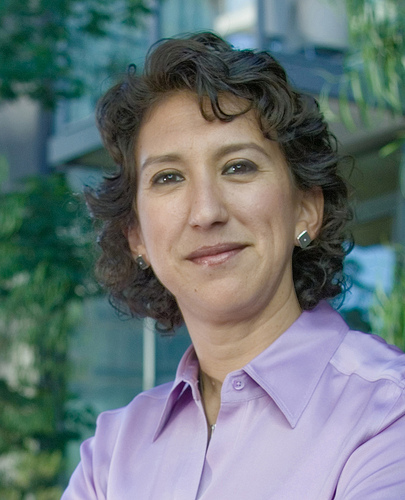 As Green For All’s Chief Strategist on State and Local Initiatives, Cecilia Estolano oversees the organization’s State and Local Initiatives Team and Capital Access Program. She is charged with spearheading Green For All’s effort to scale public-private partnerships to grow family-supporting green jobs in cities across the United States, and advocates for broad access and opportunity in all sectors of the clean-energy economy.
As Green For All’s Chief Strategist on State and Local Initiatives, Cecilia Estolano oversees the organization’s State and Local Initiatives Team and Capital Access Program. She is charged with spearheading Green For All’s effort to scale public-private partnerships to grow family-supporting green jobs in cities across the United States, and advocates for broad access and opportunity in all sectors of the clean-energy economy.
Prior to joining Green For All, Ms. Estolano served as Chief Executive Officer of the Community Redevelopment Agency of the City of Los Angeles (CRA/LA). Overseeing an annual budget of over $726 million and a work program covering 32 project areas, Ms. Estolano redefined the role of the largest redevelopment agency in the State of California. Under her leadership, CRA/LA rebuilt its housing department, adopted a landmark policy on local hiring in construction jobs, adopted a Healthy Neighborhoods policy, and created a $42 million Land Acquisition Fund to jump-start development in underserved markets like South Los Angeles.
Cecilia Estolano:
Infra & the environment
Water: much neglected infra
Why we need to invest in water
How to engage the public
Infra needs the right messenger
Download transcript (PDF): Cecilia Estolano on The Infra Blog
Tags: CA, California, Cecilia Estolano, Green for All, Guests on The Infra Blog, Los Angeles, Steven CF Anderson






 RSS Feed
RSS Feed
Supportive of improved infrastructure is water and the basic societal infrastructure necessary for humans to survive. The availability, in quantity of fresh water is approaching a real crisis. Food and Water Watch has been making this point for quite some time. Food is also an infrastructure issue for without food nothing else matters. Bridges, highways, etc. are all for not without sufficient food infrastructure to support the populace. I would like to argue for a comprehensive program to materially effect the entire green spectrum of food, water, pollution, and economic revitalization.
We simply can’t afford to grow food in Simi Valley CA, using millions of gallons of fresh water and tons of nitrate laden fertilizer that must be mediated by the environment, and then ship it three thousand miles to Washington DC for the Congressman’s lunches! My argument goes not only to the savings of massive quantities of clean water, but the elimination of harmful farm based pollution from nitrates, and huge carbon footprint in shippiing accross country. Aquaponics can do exactly that … reduce the food infrastructure cost … eliminate fertilizer and millions of gallons of wasted water.
Furthermore it can be done in the urban centers where it is needed and not shipped accross the continient. Our model for improved economic infrastructure involves establishing employee owned poor urban microenterprises to grow both protein and produce … to feed the city and themselves in the bargain … a hell of a way to create the value for improved economic infrastructure.